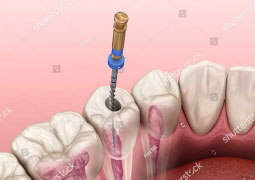Despite our best preventative efforts it is still sometimes necessary to treat disease affecting the teeth and gums. To do this takes time, good materials and excellent laboratory support.
At Cambria we pride ourselves on providing excellent treatment in a warm and friendly environment. Although some treatments may be complicated and time consuming, the use of good anaesthesia should mean that treatment can be carried out painlessly.
Many new patients are anxious when we first see them and some may have had unsatisfactory dental experiences in the past. Much of this anxiety is as a result of feeling ‘vulnerable’ and ‘out of control’.
We will always encourage patient to talk about their concerns and to stop us at any point during treatment if they have further questions or concerns.
Occasionally dental anxiety is the result of ‘fear of the unknown’. Some patients, but by no means all, feel much more relaxed if they are kept fully informed during their appointment. Below is a short list of some of the more commonly carried out treatments with a brief explanation of the procedure and expected outcome. However, if you have any specific questions please do not hesitate to ask one of the team at your next appointment.

FILLINGS
Fillings are used to repair a cavity in your tooth caused by decay. We will discuss the best type of filling that is clinically necessary, and also consider the desired aesthetic for each patient. The most common type of filling is dental amalgam, made from a mixture of different metals. Dental amalgam fillings are hard-wearing so are often used on your back teeth. If you need a filling for one of your front teeth, your dentist may suggest a tooth-coloured (white) filling.

DENTURES
Dentures are removable false teeth made of acrylic (plastic), nylon or metal. They fit snugly over the gums to replace missing teeth and eliminate potential problems caused by gaps. Gaps left by missing teeth can cause problems with eating and speech, and teeth either side of the gap may grow into the space at an angle. Sometimes all the teeth need to be removed and replaced. You may therefore need either: complete dentures (a full set) – which replace all your upper or lower teeth, or partial dentures – which replace just 1 tooth or a few missing teeth Dentures may help prevent problems with eating and speech and, if you need complete dentures, they may also improve the appearance of your smile and give you confidence.

ROOT FILLINGS
A root canal filling is a way of keeping a tooth, once the live part (the pulp) has become irreversibly damaged by painlessly removing the damaged pulp. This treatment (endodontics) is a dental procedure used to treat infection at the centre of a tooth. Root canal treatment is not painful and can save a tooth that might otherwise have to be removed completely.

CROWNS, BRIDGES & VENEERS
Crowns and veneers are both dental restoration methods that can improve the look and function of your teeth. The main difference is that a veneer covers only the front of your tooth and a crown covers the entire tooth. Dental bridges fill the gap created by one or more missing teeth.

TOOTH WHITENING
Tooth whitening can help aid discolouration of the teeth. As well as offering long lasting results, treatment options are both minimally invasive and practical. We will discuss all options with patients fully before any course of whitening is prescribed.

DENTAL IMPLANTS
Dental implants are now a standard method of replacing missing teeth instead of fitting dentures. Implant therapy is a well-proven, state-of-the- art medical dental technique, which has been scientifically tested and used in the last three decades by qualified dentists and surgeons worldwide.

